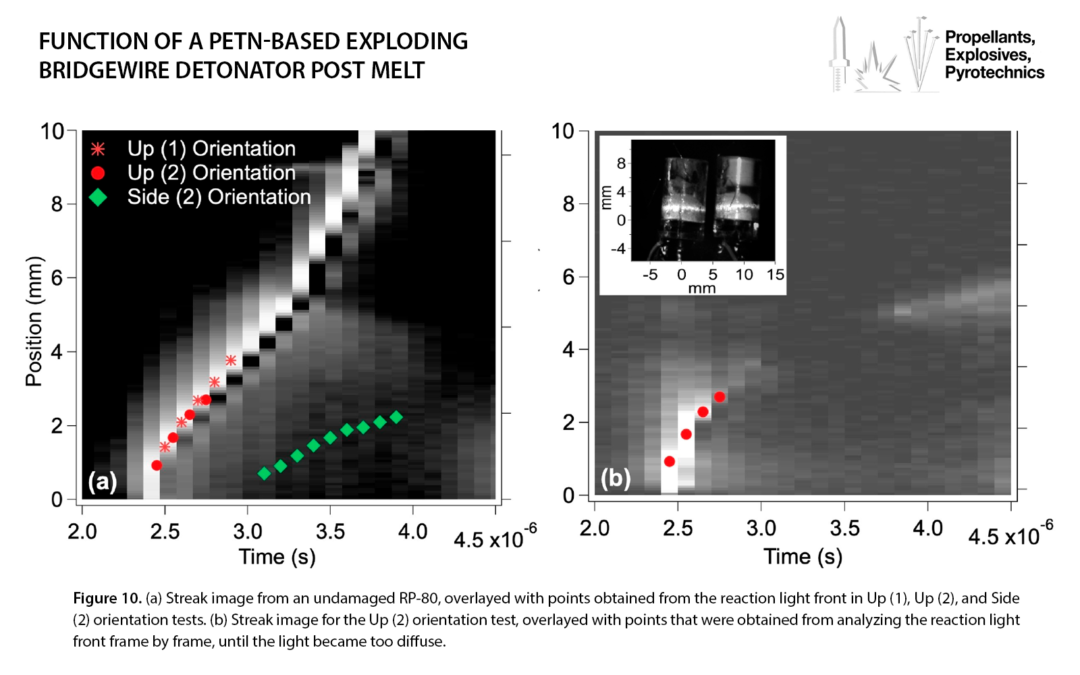DOI: 10.1002/prep.202000077
Function of a PETN-Based Exploding Bridgewire Detonator Post Melt
by Virginia W. Manner, John D. Yeager, Laura Smilowitz, Dennis Remelius, and Bryan F. Henson
Abstract: Exploding bridgewire (EBW) detonators are used for a variety of purposes and subjected to a wide range of conditions during transport and use, however, few studies have been conducted on stability at high temperatures. Many EBW’s contain pentaerythritol tetranitrate (PETN) as the initiating explosive, which has been shown to exhibit a relatively low melt at 141°C, followed by an onset of decomposition of approximately 160°C. In the present work, we have evaluated the behavior of PETN with X-ray radiography in commercial RP-80 EBW detonators at temperatures just above the melt. These experiments show that PETN remains stable in the solid-state, but after reaching the melt temperature is vulnerable to mixing, followed by rapid evolution of gases and decomposition. Our results indicate that the orientation of the thermally treated detonator with respect to gravity is important after the PETN reaches the melted state: this shows for the first time why thermal tests on PETN-based detonators often result in varied outcomes.
Introduction
There has been significant interest in the thermal decomposition behavior of pentaerythritol tetranitrate (PETN) [1, 2, 3], particularly inside commercial exploding bridgewire (EBW) and non-electric detonators as well as detonation cord [4, 5, 6]. The ability to predict the behavior of PETN in accidental conditions, such as a fire during transport, is important for widely used commercial detonators. Although EBW detonators are used for a variety of purposes and subjected to a wide range of conditions during transport and use, in depth studies on high-temperature stability are relatively rare. High-temperature applications have generally been noted as requiring detonators that contain more thermally stable initiating explosives, such as 1,3,5-trinitro-1,3,5- triazinane (RDX) and 1,3,5,7-tetranitro-1,3,5,7-tetrazoctane (HMX) [7]. Many EBW’s contain pentaerythritol tetranitrate (PETN) as the initiating explosive, which has been shown to exhibit a relatively low melt at 141°C, followed by an onset of decomposition of approximately 160°C. Recent thermal cookoff experiments conducted on non-electric detonators containing PETN have shown that reaction occurs at temperatures of approximately 170°C or higher, depending on the ramp rate [5]. However, there were no visual diagnostics to determine the state of the thermally damaged PETN during heating.
Learn more about ultra high-speed imaging solutions:
Contact a Hadland Imaging representative to learn more about ultra high-speed cameras & everything you need to get the job done right.
Keywords: Shimadzu Hyper Vision HPV-X2, X-ray, Pentaerythritol tetranitrate, PETN, Melt, Explosive, Detonator
